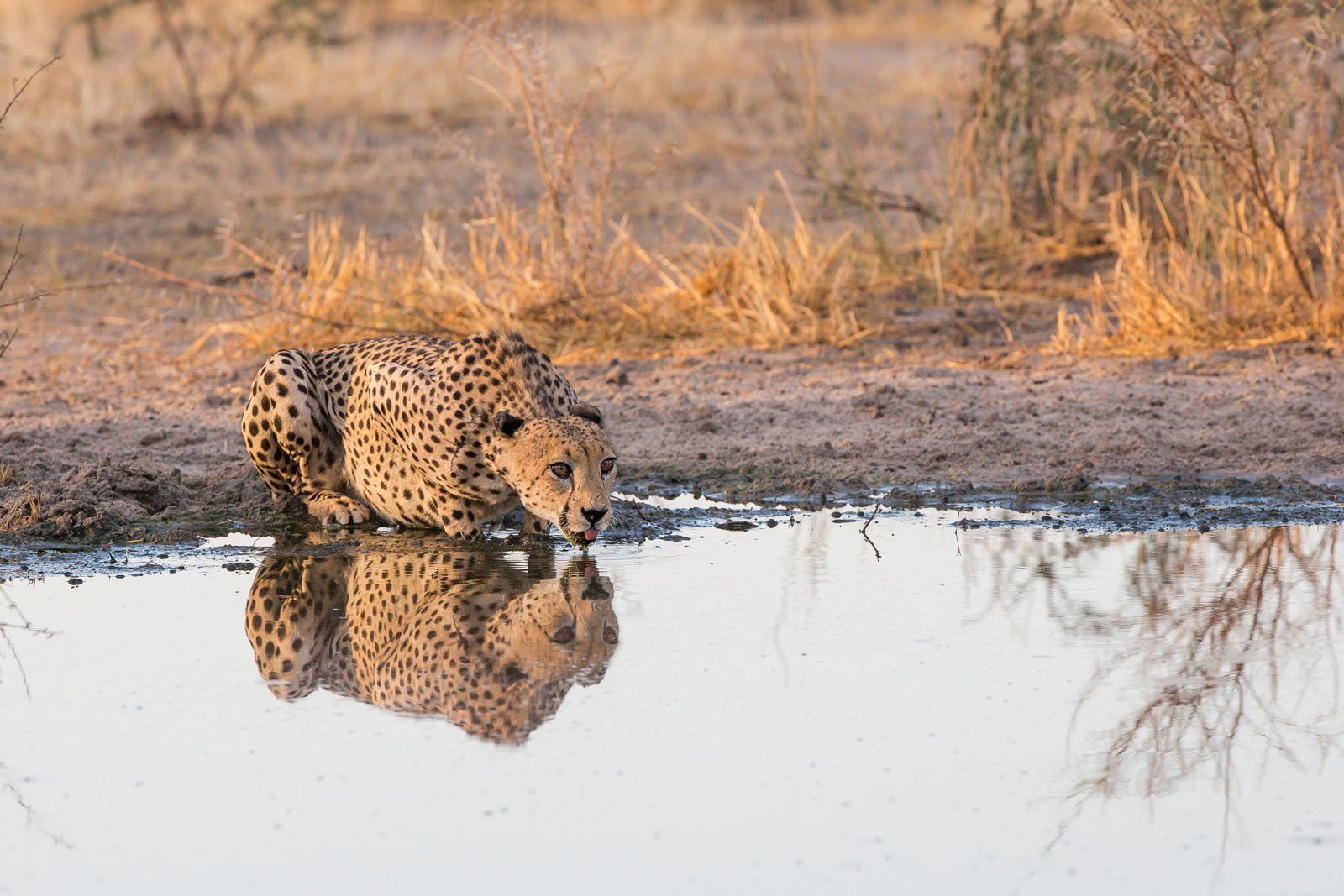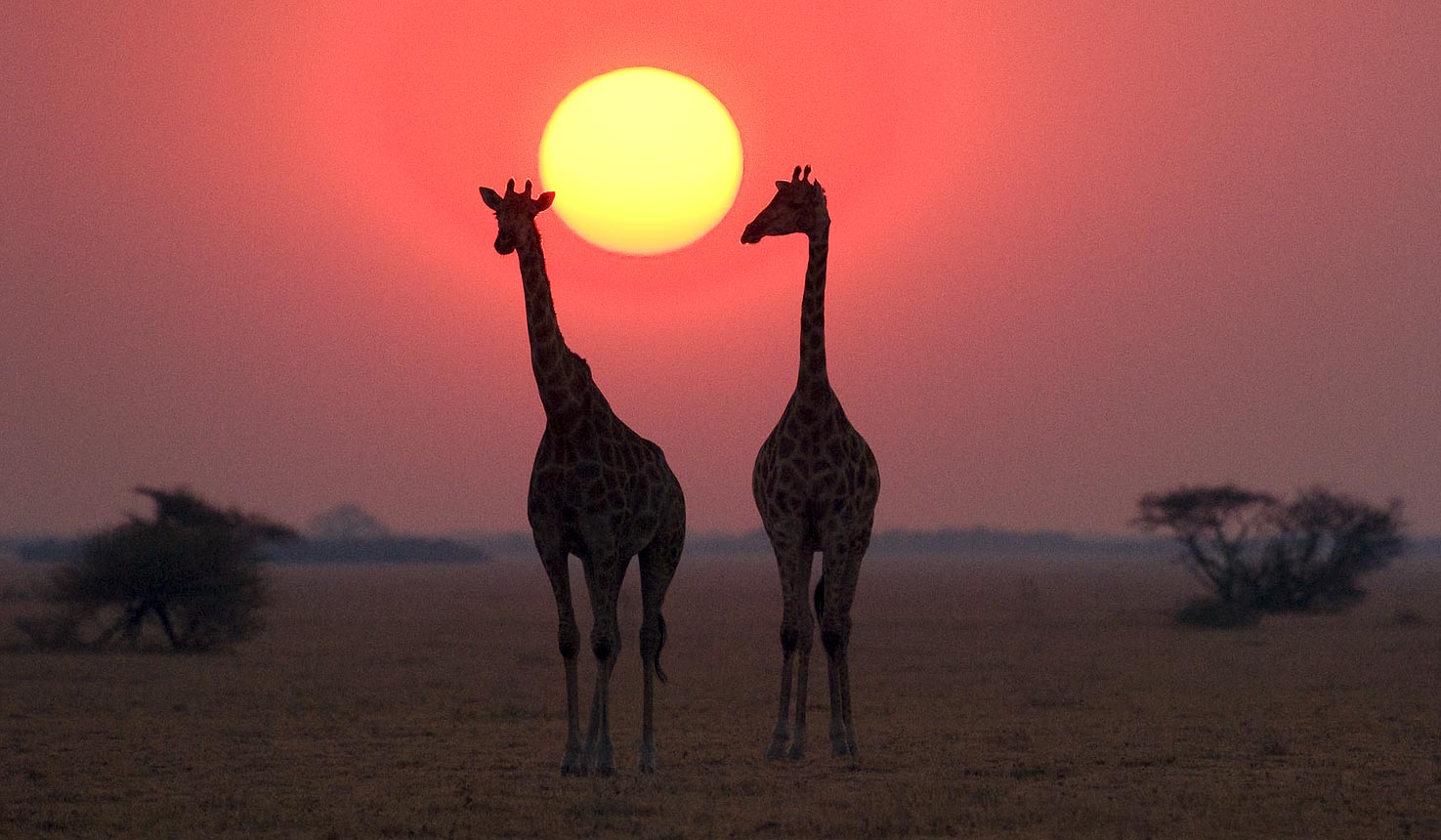Summer (December – March): Most people will tell you the best time to go to the Central Kalahari Reserve is during summer, and although summer is certainly worth considering, we actually prefer spring or autumn (more about that below). While summer is the rainy season, you will typically get short but intense rain showers, so the rain itself is not a major problem. The rain transforms the barren and arid Kalahari into a lush green oasis for a few short months. Animals congregate around water sources, they give birth, which in turn attract predators… this is definitely the best season for some spectacular sightings.
The one downside is that the heat is at its peak, with temperatures up to 40°C / 105°F being very common. This combined with the fact that few hotels have air conditioning means the heat can be unbearable for some, and with the rains, the dirt roads will be muddy and uncomfortable.
Spring (September – November) and Autumn (April – May): Our favourite time at The Travel Cafe to visit the Central Kalahari is autumn, to be precise April and May, just after the rains. These are spectacular months to go to the Central Kalahari. Animals linger in the region after the summer rainfalls. as they do not need to move on in search of new water sources yet, but the temperatures are cooling down and becoming much more bearable. The roads are also dry and easier to pass than during summer, when storms are common. Spring (September – November) is also pleasant from a weather point of view, but the Central Kalahari is still dry and arid at this time before the arrival of the summer rains, and as a result animal sightings are less likely.
Winter (June to September): Winter has perfect temperatures, however, this is the dry season and our least favourite season for visiting the Central Kalahari. Dry season in this arid climate means no water, less animals as some migrate in search of water, and dry and dusty roads.
However, even during the dry winter months, we won’t deny that the Kalahari is full of charm and boasts a different kind of beauty. If you wish to experience a proper arid desert experience, winter is a great time to go to the Central Kalahari. It is well worth it, just remember the Central Kalahari is not the best safari destination during winter, so we recommend pairing it with the Okavango Delta (an area in its prime during winter) or Chobe.













